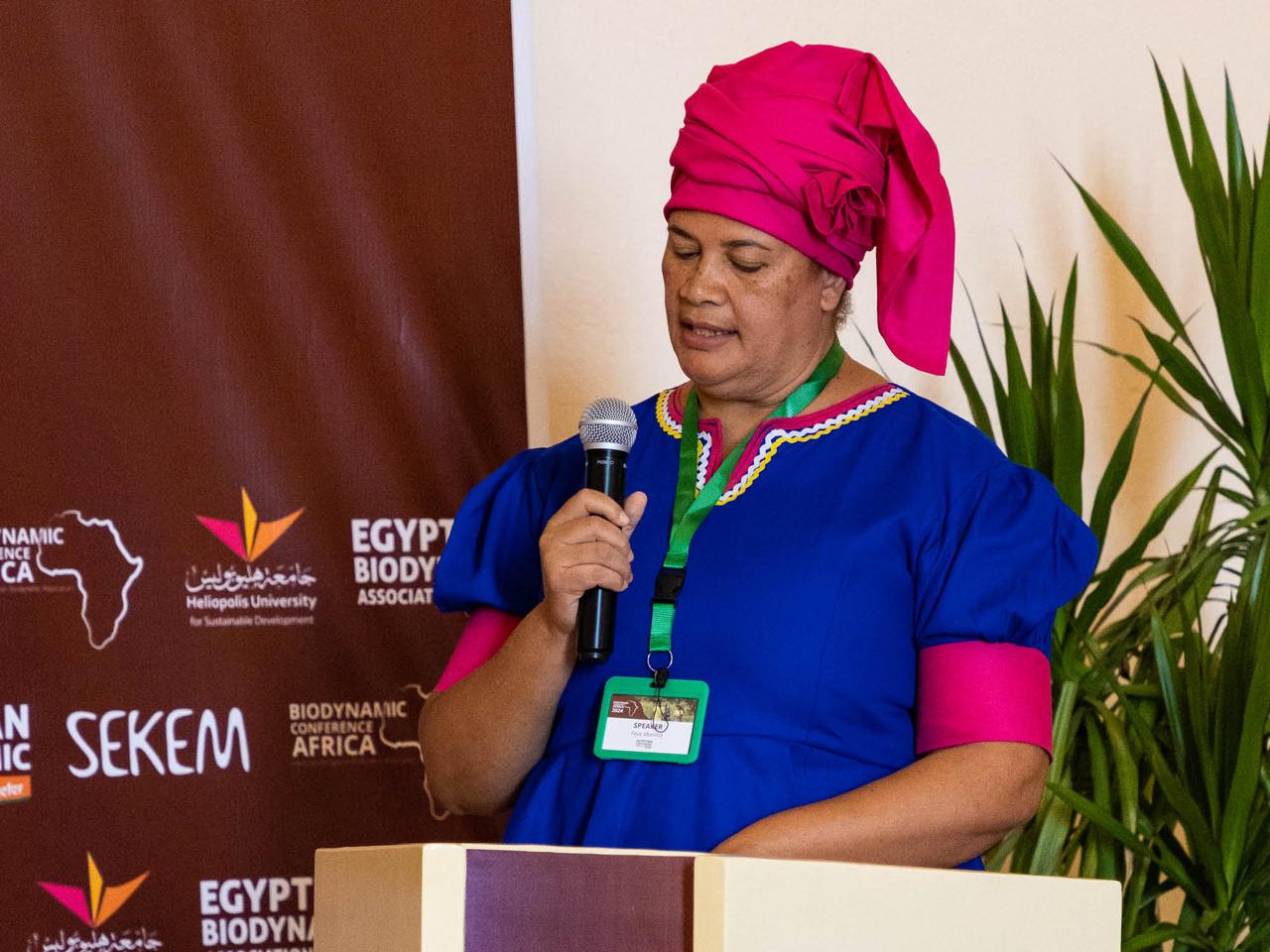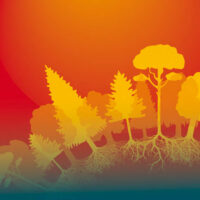In an effort to reconnect African farmers and the Earth, Feya Marince co-founded the Indigenous Biodynamic Association of Africa (IBAA). Kalle Hübner, from the Section for Agriculture, spoke with her during the first African Biodynamic Conference, held at the Heliopolis University in Cairo, in May 2024.
Feya, in your speech at the conference, you said that the old wounds of colonialism help us wake up. Why is that?
Change is inevitable for us as human beings. We realized we cannot continue with the industrial, conventional way of agriculture that was imposed upon us. It is a system that does not work—we have been taking more than what we need from the Earth. We have not been kind to the Earth. It is almost as if she is reacting to that; she says enough—no more! She is a living being. It is about healing the connection between us and Mother Earth and remembering our connection because we have seen ourselves as separate from the Earth. We are now being given another opportunity, a last chance to heal her and heal ourselves in the process.
Many conference attendees spoke about an “African way” of biodynamics. What is meant by that?
This is what we need to discover—it is a new journey we are embarking on in Africa. We are all at different stages: Some have been exposed to biodynamic training, have deeply connected with its spiritual-science aspects, and use biodynamic methods to heal the soil and the community. Some are only using preparations to get certified and export to Europe. The European market requires premium organic products, which is good, but while we deal with standards and certifications, the spiritual aspect must be developed equally.

When we look at preparations, we see several preparation plants are foreign to the African continent, and components such as oak bark and deer bladder must be imported. During the conference, it became clear that this raises questions.
Preparations are central to the African way of biodynamics and the protection of plants in Africa to the best of our ability. The main question is sustainability: how can we sustain this if we need to import a deer bladder from Germany, for instance? Another example is Valerian—it will not flower in certain parts of Africa. We need to research alternative preparations for Africa. Nature does not operate in a void; there must be some plants here in Africa that flourish on this continent with similar properties. This needs to be developed, and it needs to be based on a profound observation of the nature of these plants and animals, as well as a deep understanding of the life forces at play. In my view, it is the most crucial challenge for biodynamics here.
In 2022, your group established the Indigenous Biodynamic Association of Africa.
Yes, this approach is one of many ways to teach biodynamics. It allows farmers to remember our indigenous ways of farming and develop their own identity. We were also curious how indigenous people in other countries would connect with biodynamics. The association allows us to do that work across borders. It was also a way for Africa to find its voice and let this ancient voice be heard globally.
How do you bring biodynamics to indigenous communities?
We begin with making compost. We make observations and comparisons. When you make people curious, they open up to this new way of farming and immediately connect it to a story their grandparents would tell. Then you are in the conversation and say that biodynamics is a hundred years old. People are often surprised and wonder why it did not grow in Africa earlier. Indigenous wisdom is the door opener, and we take it from there and study the spiritual science of Anthroposophy. It starts with these conversations about our ancestors and their ways of farming with nature.

You said the earth is a living being. “The Earth as a Living Being” is also the theme of the next Agriculture Conference at the Goetheanum. What can we learn from the African perspective?
Let me give you an example. As a child, I never understood why farmers take their shoes off to sow. I recently visited a local community and spoke to a 96-year-old lady. She explained how they would connect to the seed in their hand, ground themselves to the soil with their bare feet, and then form the intention for a good harvest in their thoughts. They intuitively regarded the Earth as a living being. They understood the connection between the living earth, humans, and the cosmos through agriculture.
What does “the Earth as a living being” mean today?
To me, it means studying and using preparations to enliven the soil as co-creators alongside nature. Enlivened soil feeds enlivened plants, which feed enlivened animals and humans. It is one balanced ecosystem of giving and receiving life. We are a microcosm of the macrocosm. Indigenous cultures help us rediscover what life is.

Looking at SEKEM’s success story and the Economy of Love initiative here in Egypt, what impression do you have?
Seeing what is possible in SEKEM—how they work in the community and how they care for each other—gives us tremendous hope for the future. It is like a manifested statement that biodynamics works and can be successful. It is proof that we, too, can heal our land and ourselves, even if we may do it differently in our communities or countries. We need to take this hope from this conference. It will take time to get all the answers we need because our progress as a movement depends on the journeys of every individual. My journey began when I connected to biodynamics through compost making, which made me curious, and I read up on it in the Agriculture Course. You have no idea what that experience meant to me. I felt at home—it was as if I had always known this.
Many farmers speak about the karmic dimension of biodynamics—it seems special.
It is so special. We, as farmers, are fulfilling our purpose during this time. At a soul level, Earth stewards have this connection with the earth. The time is now to balance opposites to create a return to wholeness. This is where the farmers’ calling comes from. It is deep. It is the yearning of the soul to help heal Mother Nature for the good of all.
This article will appear in the next issue of “Living Farms,” the magazine of the Section for Agriculture, where you can also read more about the topic of the Agriculture Conference 2025: “The Earth as a Living Being.”
More Living Farms Magazine, Agriculture Conference 2025, The African Biodynamic Conference
Title image Feya Marince, Photo: Kalle Hübner





